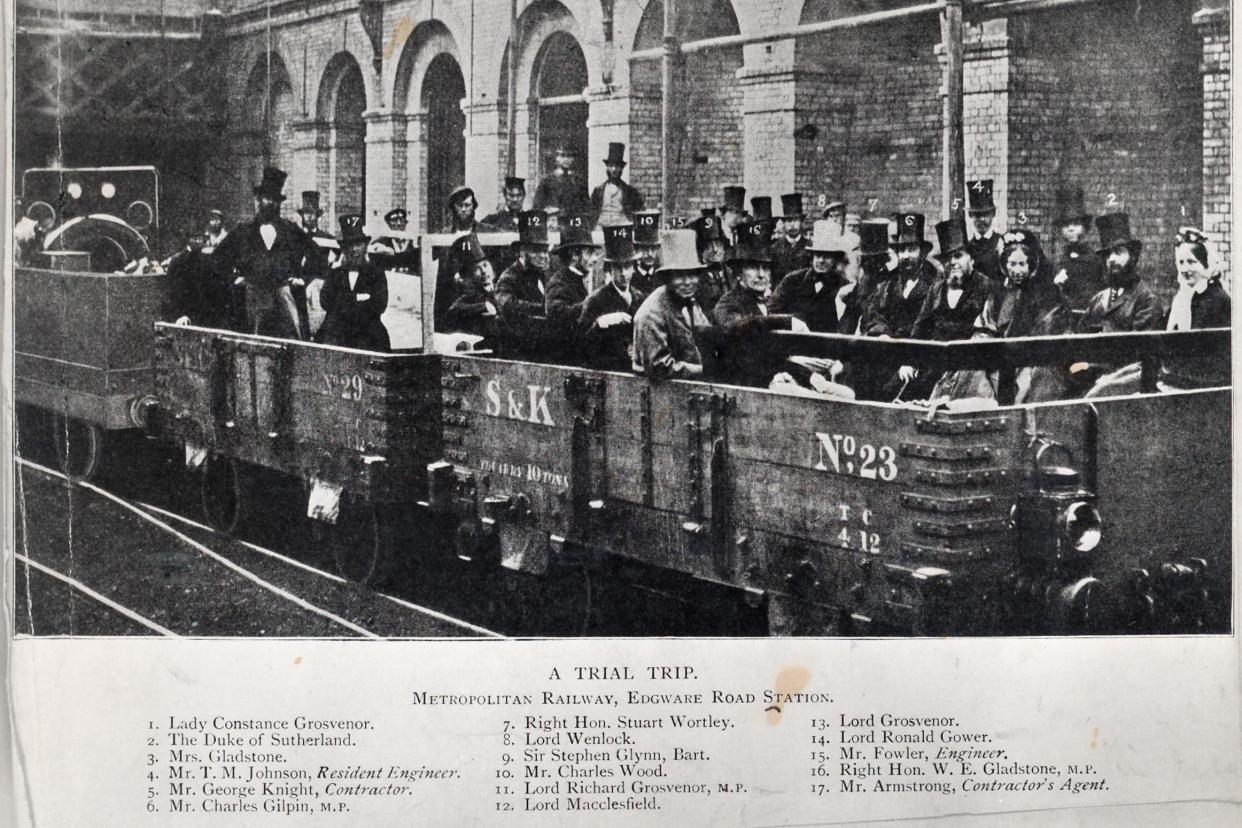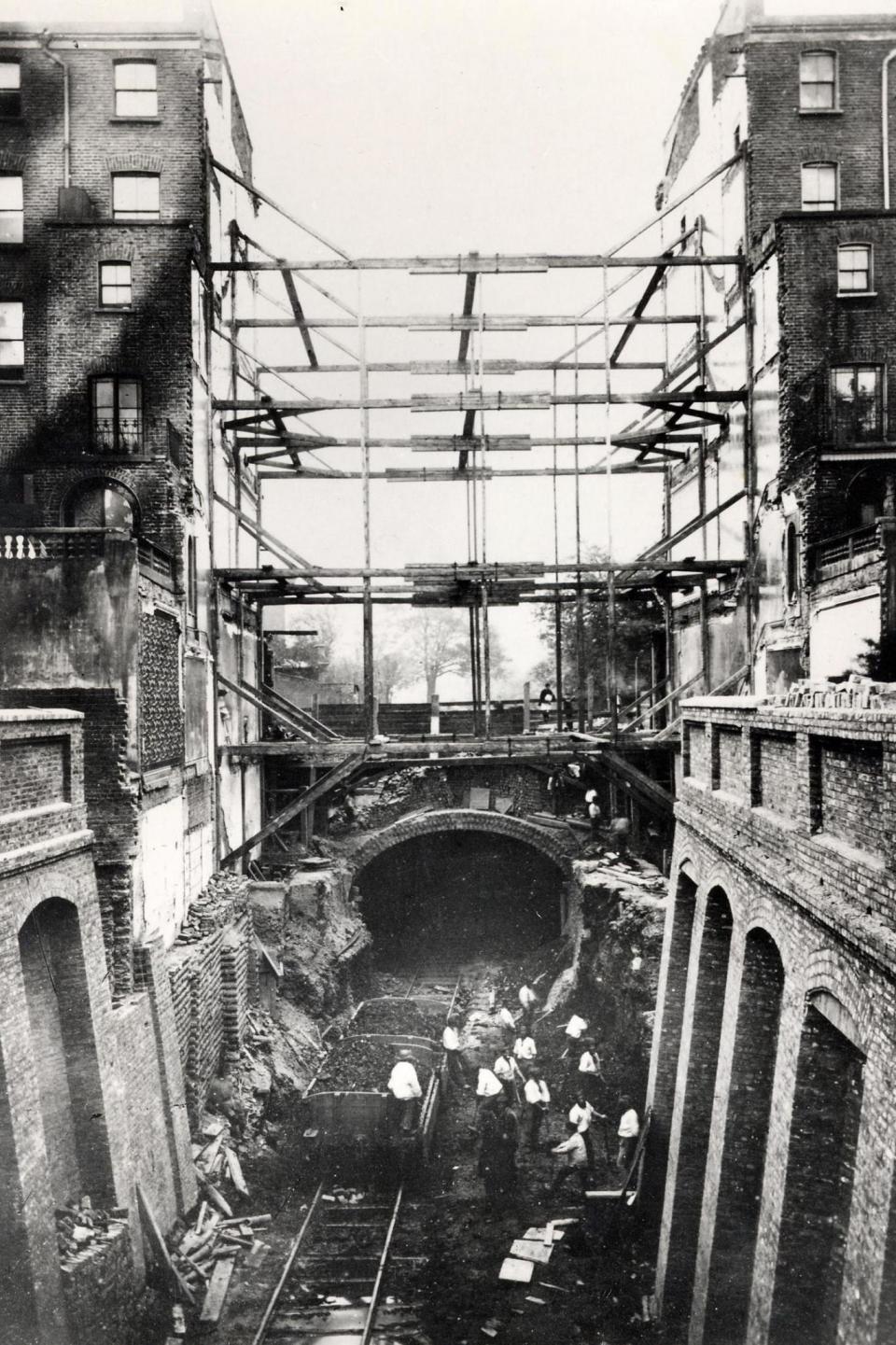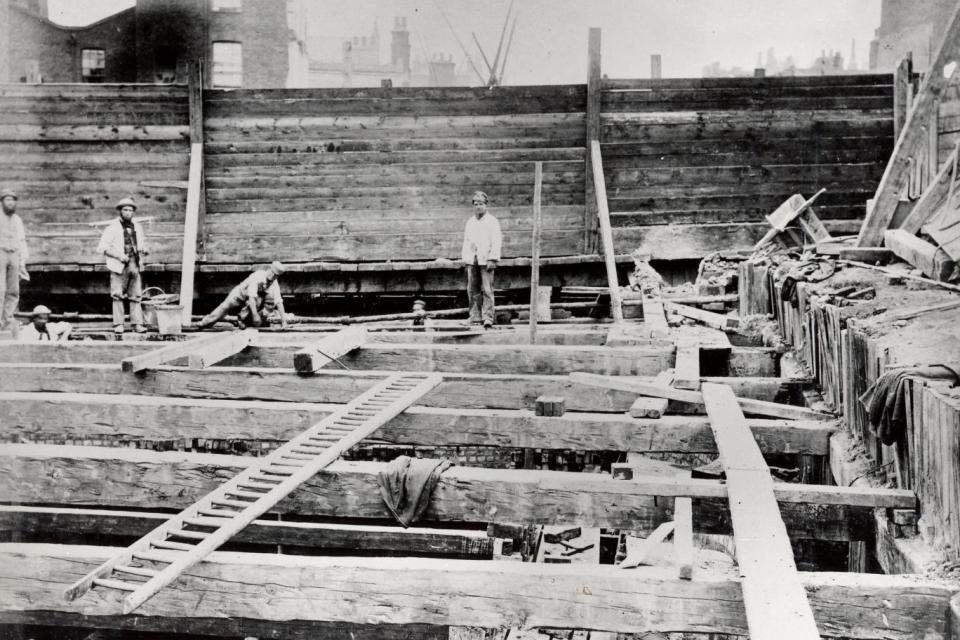Fascinating black and white photos of Tube being built in 1863 released for London Underground's 155th birthday

Rarely-seen black and white photos of the Tube being built have been released to mark the network’s 155th birthday.
On this day in 1863, the first section of the world-famous London Underground opened to the general public after a massive engineering feat burrowing new tunnels under Victorian London.
Among the fascinating photographs released by the London Transport Museum is a picture showing an early trial trip on the Tube as well as workers building the new line in Bayswater.
Rail workers – dressed very differently to the Network Rail construction teams of today – are pictured building the line at Praed Street in Paddington.

The first line which opened was the Metropolitan – then named the Metropolitan Railway – between Paddington and Farringdon via Baker Street.

The same stretch of the Tube is still in use today, with Baker Street and Great Portland Street among the Underground’s oldest stations.
In the years that followed, more and more lines were built with the District line opening between Westminster and South Kensington on Christmas Eve in 1868 and the East London Line, which was later overhauled to become part of the Overground, opened in 1869.

The Inner Circle line, now just the Circle line, opened in 1884 and, to mark the new century, the Central Line was opened between Shepherd’s Bush and Bank in 1900 under the name the Central London Railway.
The Piccadilly and Bakerloo lines opened in 1906 while in 1911 another Tube first was marked at Earl’s Court where the first escalators were installed.

The Northern line opened in 1924, the Victoria in 1968 after 25 years of planning and the Jubilee in 1979.
Transport for London said two of London’s oldest stations – Baker Street and Great Portland Street – will soon be among the network’s most high-tech amid plans to transform the signalling.
Mark Wild, managing director of London Underground, said: “Today marks the 155th anniversary of the Tube which continues to be an iconic symbol of London and remains as vital as it ever was in the lives of Londoners.
"The oldest section of our network will soon be the most modern, with the huge programme to modernise signalling set to transform journeys on the Circle, Hammersmith & City, Metropolitan and District lines – 40 per cent of the network – in the coming years.
"We are currently investing unprecedented levels into the Underground to make journeys more reliable, increase capacity and ensure that the network can continue to deliver for London for many more years to come.”
According to the Museum of London, construction of the underground was by the "cut and cover" method before the development of the tunnelling shield by James Henry Greathead.
The first tunnelled railway in London was the City and South London Line, which opened in 1890 and now forms the Bank branch of the Northern line.
The Elizabeth line will be the next Tube route to open in December 2018 as part of the new Crossrail project.
The route will pass through 41 stations from Reading in the west to Shenfield, Essex, in the east.

 Yahoo News
Yahoo News 
